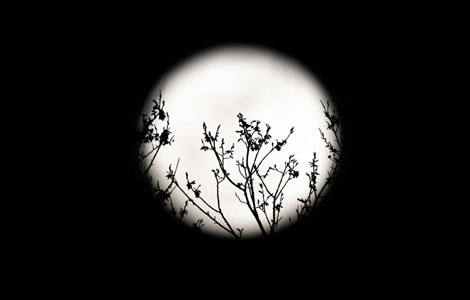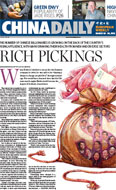Art
The mythic elements in chinese architecture
Updated: 2011-03-17 16:39
(cultural-china.com)
Concepts from feng shui geomancy and mythic elements of daoism are usually present in the construction and layout of Chinese architecture, from common residences to imperial and religious structures.
|
 |
This includes the use of:
Screen walls
to face the main entrance of the house, which stems from the belief that evil things travel on straight lines.
Talismans and fortuitous imagery
Door gods displayed on doorways to ward evil and encourage the flow of good fortune
Three anthropomorphic figures representing Fu Lu Shou (福禄寿) stars are prominently displayed, sometimes with the proclamation "the threes star are present"(三星在);
|
 |
Fruits and animals that symbolize good fortune and prosperity, such as bats and pomegranates, respecitively. The association is often done through rebuses.
Orienting the structure with its back to elevated landscape and ensuring that there is water in the front. Considerations are also made such that the generally windowless back of the structure faces the north, where the wind is coldest in the winter.
Ponds, pools, wells, and other water sources are usually built into the structure.
|
 |
The use of certain colors, numbers and the cardinal directions in traditional Chinese architecture reflected the belief in a type of immanence, where the nature of a thing could be wholly contained in its own form. Although the Western tradition gradually developed a body of architectural literature, little was written on the subject in China, and the earliest text, the Kaogongji(考工记), was never disputed. However, ideas about cosmic harmony and the order of the city were usually interpreted at their most basic level, so a reproduction of the "ideal" city never existed. Beijing as reconstructed throughout the 15th and 16th century remains one of the best examples of traditional Chinese town planning.
E-paper

City of Joy
Welcome to the 'world of smiles' where life meanders slowly.
Preview of the coming issue
Debate on nuclear power revived
The future is now
Specials

Beloved polar bear died
Berlin's beloved polar bear Knut, an international star died Saturday.

Panic buying of salt
Worried Chinese shoppers stripped stores of salt on radiation fears.

'Super moon'
The "Super Moon" arrives at its closest point to the Earth in 2011.
